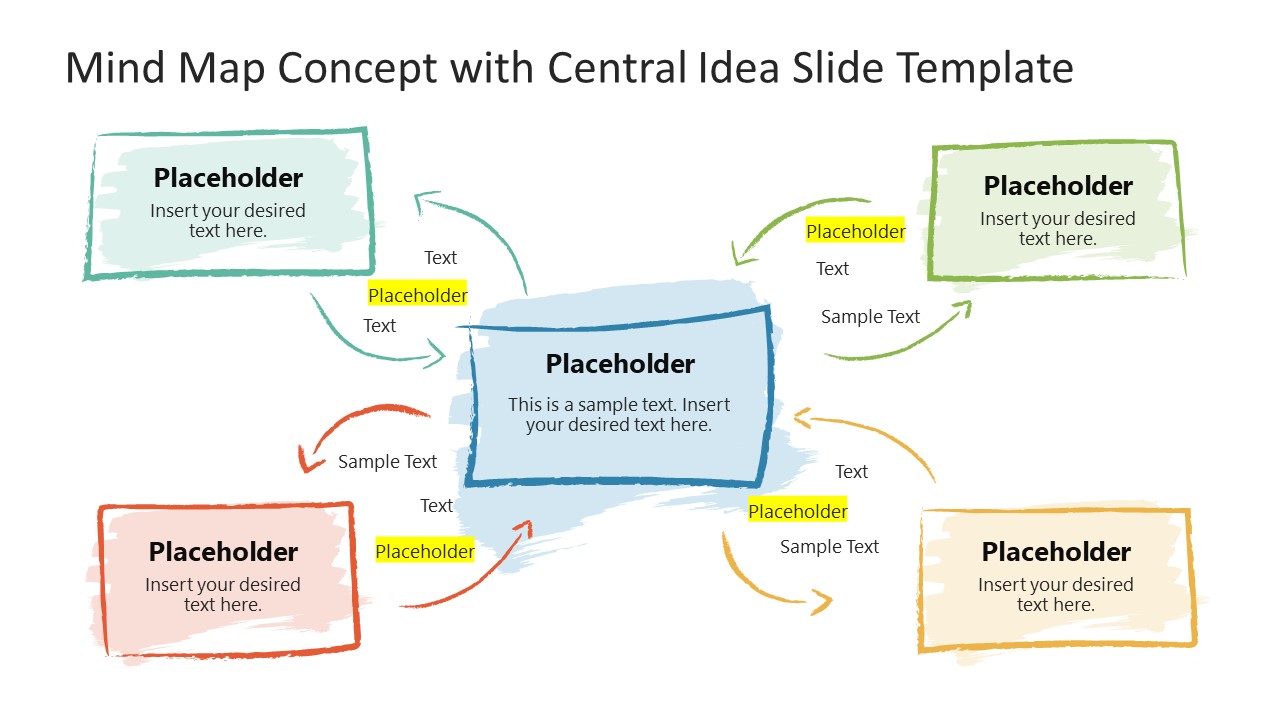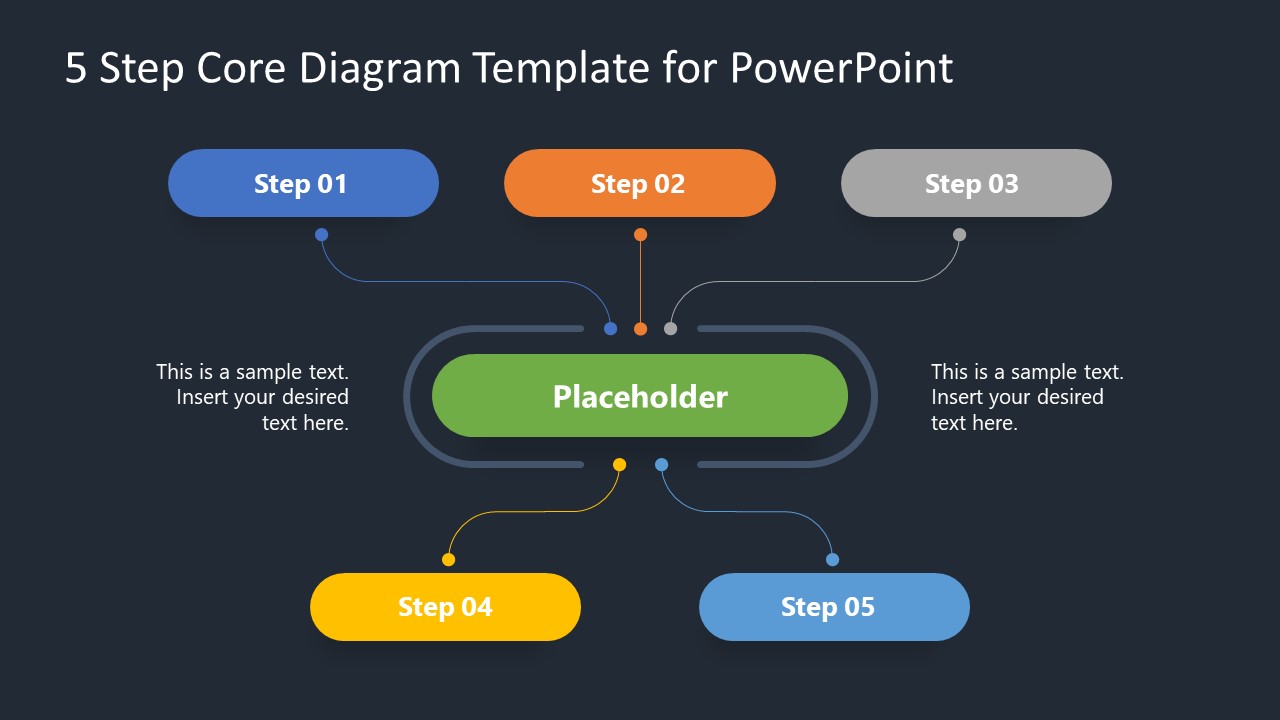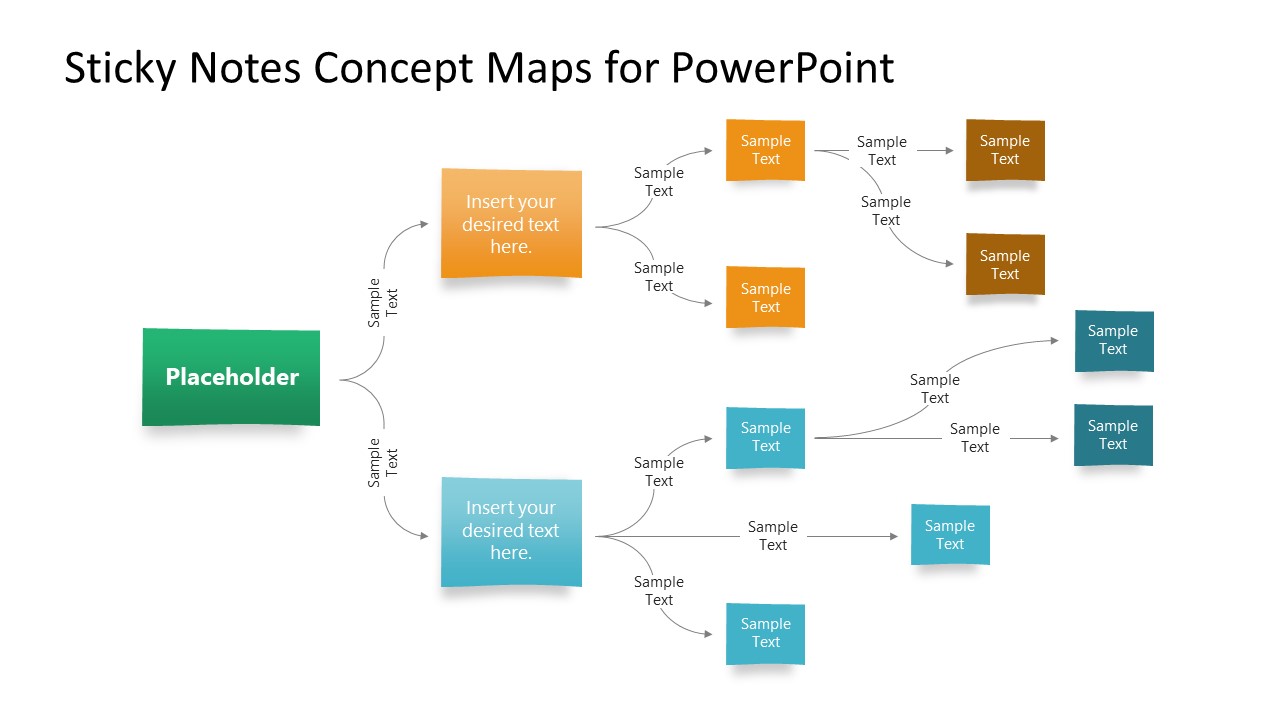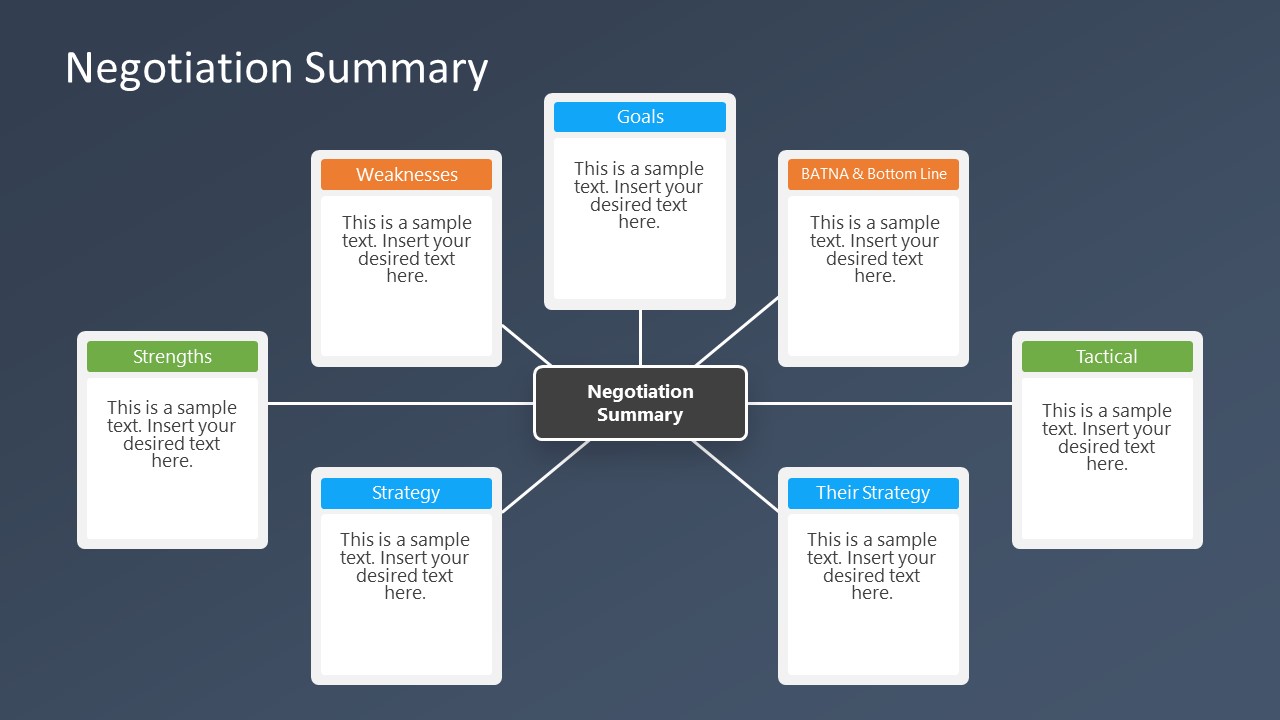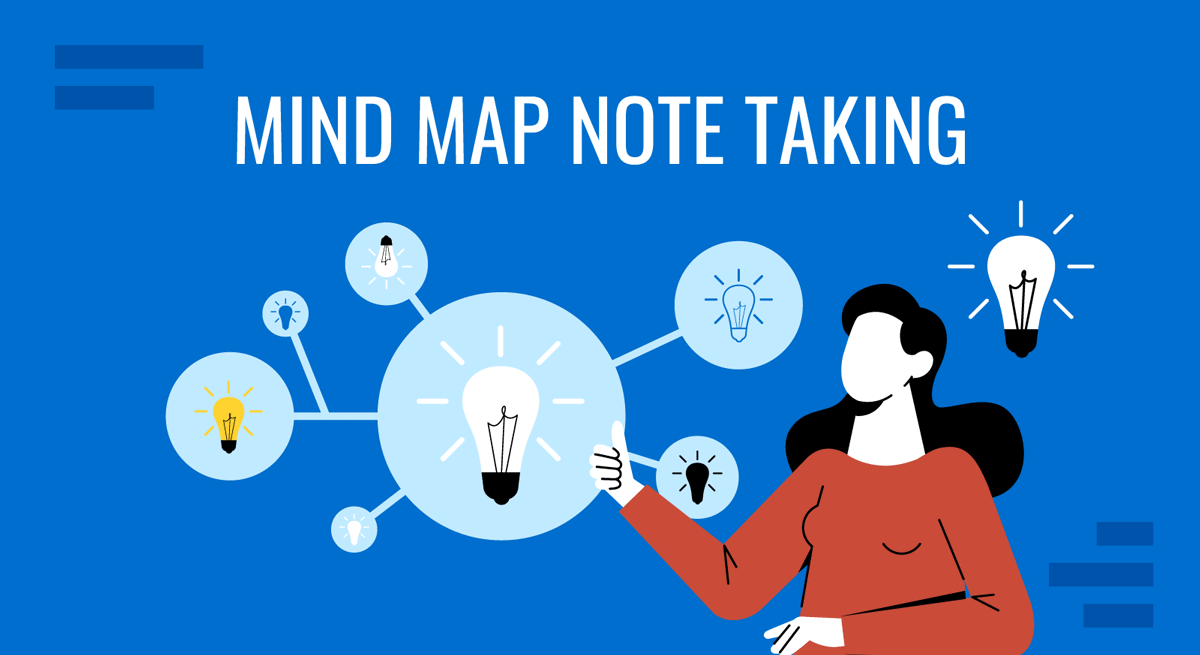
Some people find it challenging to attend a meeting and effectively retrieve information from its outcome. Several tools have been studied over the years to condense data, especially complex concepts, into actionable notes, and today we will approach one visual tool of particular interest for us presenters.
Mind map note-taking is a transformative approach to the typical mind map. This method leverages visual diagrams to represent tasks, words, concepts, or items linked around a central concept. By utilizing mind map notes, presenters can enhance their recall and generate deeper insights into their topics.
Table of Contents
- Understanding Mind Map Note Taking
- How Mind Map Note Taking Enhances Presentation Skills
- Customizing Mind Map Notes for Effective Presentations
- How to Use Mind Map Notes for Presentation Development
- Case Study: Mind Map Note Taking in Corporate Strategy Development
- Case Study: Academic Research Presentation and Mind Map Note Taking
- Case Study: Application of Mind Map Notes to Health Care System Improvement
- Recommended Mind Map Note Taking Templates for PowerPoint & Google Slides
- Final Words
Understanding Mind Map Note Taking
Mind mapping is a technique where information is visually mapped out in a way that resembles a tree structure. This method is distinct because it encourages non-linear thinking and organization of ideas. The central node represents the main topic, and related sub-topics radiate from it in branches, forming a connected nodal structure that is both intuitive and analytically effective.
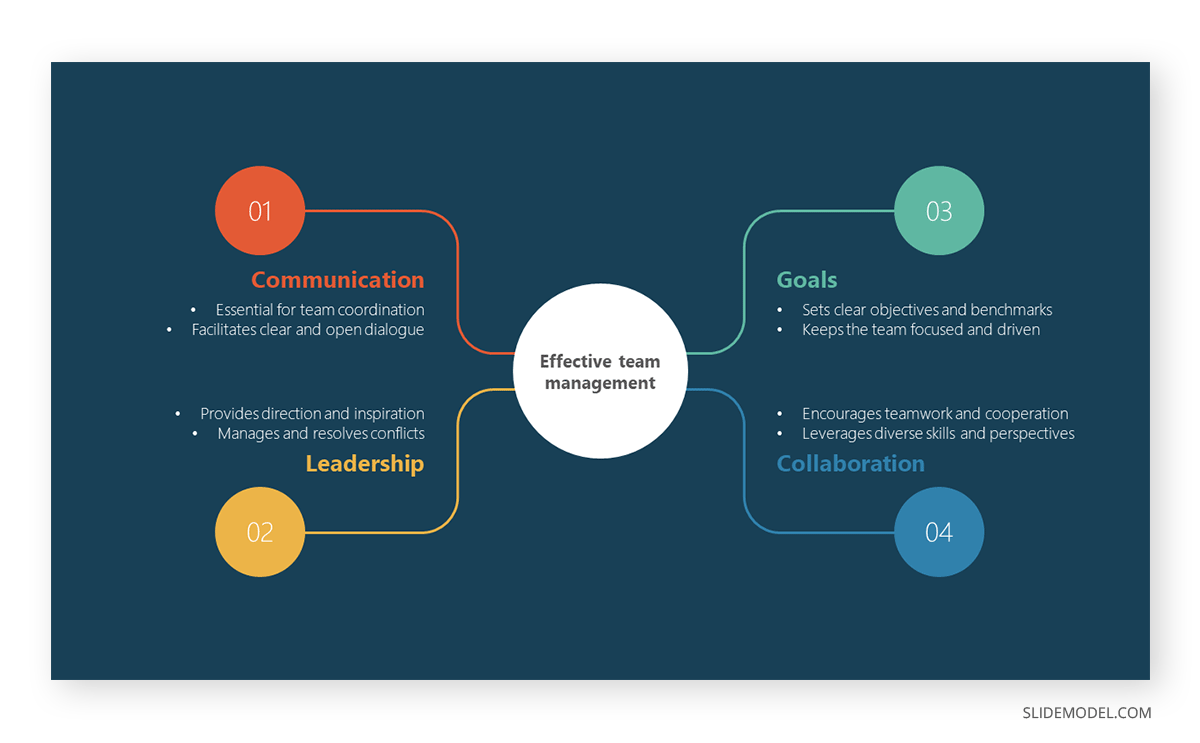
On the other hand, we call mind map note-taking the application of mind maps for distilling information into a structured visual form as it is being received or reviewed. Some key aspects include:
- Real-time creation: Unlike general mind maps, which might be created over time and adjusted, mind map notes are often created in real-time during a lecture or meeting.
- Emphasis on keywords: Although this can be considered key for the marketing industry, several other niches can apply this format and capture keywords with their interrelations rather than lengthy sentences. With the proper node structure, recalling information this way is far easier.
- Adaptability: As new information is presented, the concept map templates can grow organically, with new branches or connections added on the fly.
How Mind Map Note Taking Enhances Presentation Skills
Mind maps are particularly useful for presenters because they condense complex information into a clear, visual format. This not only aids in the internalization of knowledge but also in visual communication and connecting with the audience. Here’s how presenters can use mind maps to boost their presentation skills:
Organization of Ideas
Presenters can expand outward to secondary and tertiary ideas starting with a central idea. This helps structure the presentation logically and ensures no critical point is missed.
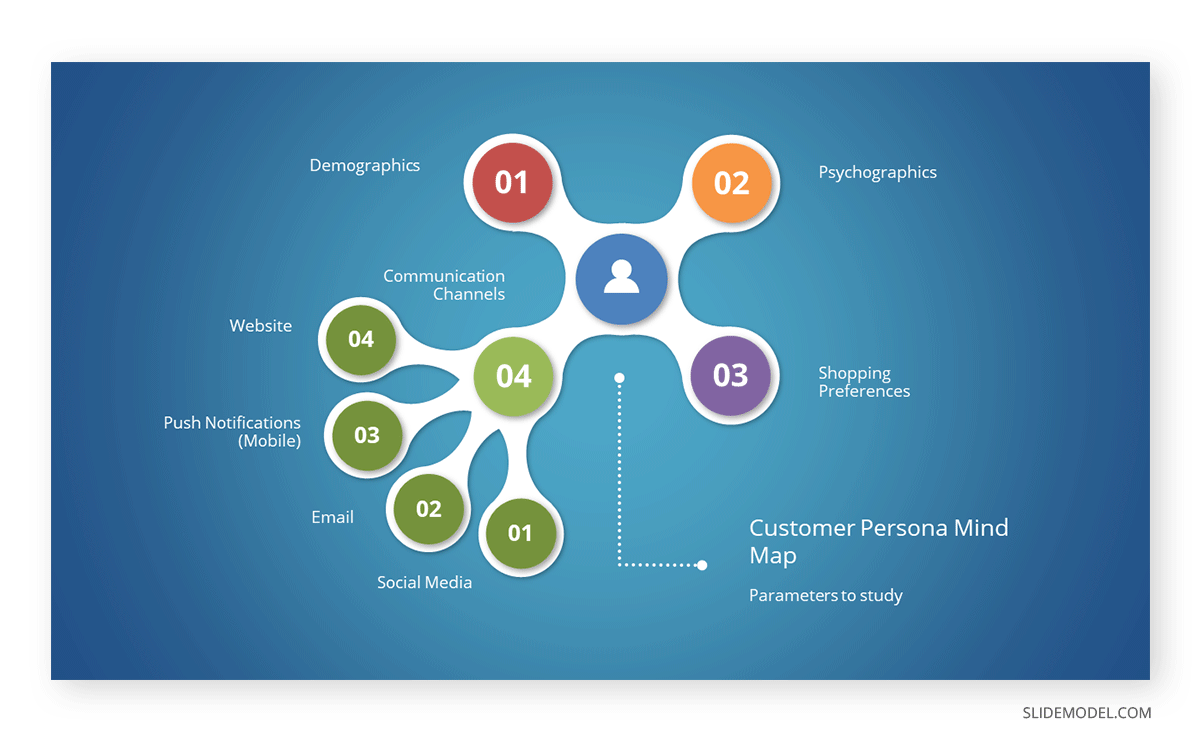
Memory Recall
The visual nature of mind maps helps recall information more effectively than traditional notes. The spatial organization and use of colors and images make recall cues more robust and intuitive.
Creativity and Engagement
Creating a mind map can be a dynamic process that stimulates creative thinking. In teamwork settings, this creative process can translate into interactive presentations in which the attendees help to build a collective mind map of the ideas introduced in the meeting.
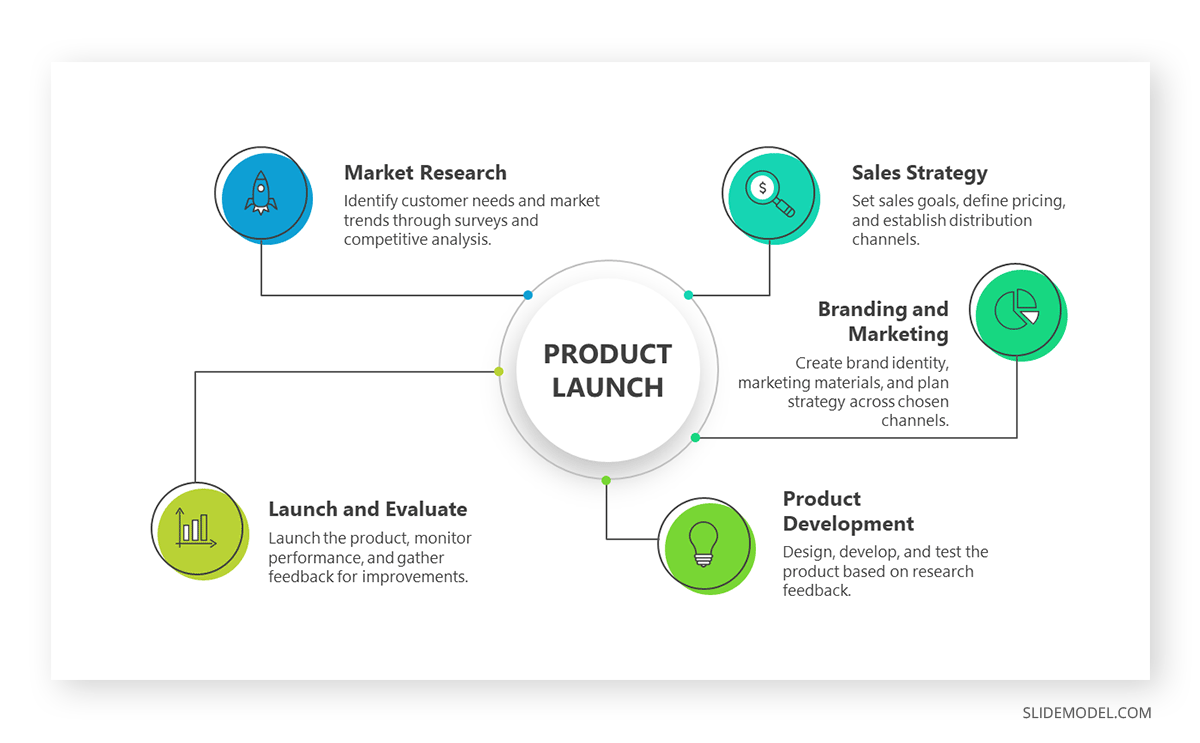
Flexibility in Editing
Mind maps can be easily adjusted as new ideas emerge or changes are required. This flexibility is crucial during the iterative process of developing a presentation.
Customizing Mind Map Notes for Effective Presentations
Although we can work with pre-made templates, customization is always a must as we ensure the presentation fits our unique needs and style. Here are some tips for tailoring mind maps to fit your presentation:
- Choose Your Tools: Whether digital or on paper, choose the medium that you are most comfortable with. Digital tools often offer functionalities like drag-and-drop editing and easy sharing, and can be presented by sharing the presentation on a screen, through tablets, or in pairs working with a computer. On the other hand, the mind map template we use can be printed as a layout to proceed with mind mapping note taking.
- Use Colors and Icons: Use colors to group related ideas or denote different topics. PowerPoint Icons or vector images can also be added to create visual associations without altering the presentation’s aesthetic values.
- Incorporate Keywords: Instead of full sentences, use keywords to keep the mind map clear and easy to skim.
- Link to Sources and Data: For digital mind maps, link parts of your map to sources, data, or even slides of your presentation for quick reference.
How to Use Mind Map Notes for Presentation Development
Once you have created a mind map, it can be a foundational tool for developing your presentation. Here’s how you can move from the mind map to the final presentation:
Outline Extraction
Use the structure of your mind map to outline your presentation. Each branch can represent a different section or part of your presentation. From then, you can link the bibliographical information to back up your research in a presentation handout or spare document.
Slide Development
Convert each node or branch into a slide. This ensures that your presentation flows logically and covers all necessary points. As we’ve mentioned in our article on the 10-20-30 rule of presentations, one idea per slide ensures the audience remains focused on the topic in discussion.
Rehearsal
Walk through your mind map multiple times. This will help solidify your understanding and presentation flow, making you more comfortable and reducing the need for notes. You can take cues from our guide on the Feynman’s Technique for how to simplify the concepts you have to elaborate from your mind map notes. Additionally, rehearsing the mind map notes contributes to memorizing a presentation.
Feedback Incorporation
After rehearsing, you might find areas that need refining. Use your mind map to incorporate feedback and make adjustments quickly. You can share your mind map notes with a fellow worker to review the final details of the presentation, which makes the process smoother than going slide by slide in your presentation deck.
Case Study: Mind Map Note Taking in Corporate Strategy Development
For our first case study, a multinational corporation is hosting a strategy meeting within the marketing team to overhaul its global marketing strategy. The team has to handle several reports gathered from different departments to tailor the strategy by segment. Therefore, some team members proposed to work with mind map note taking to streamline this process and enhance the learning experience.
The marketing team started a digital mind map PowerPoint template with a central node labeled “Global Marketing Strategy 2024”. From this central node, branches were created for key regions: North America, Europe, Asia, and South America. Each regional brand is further divided into local market trends, consumer behavior, and competitors.
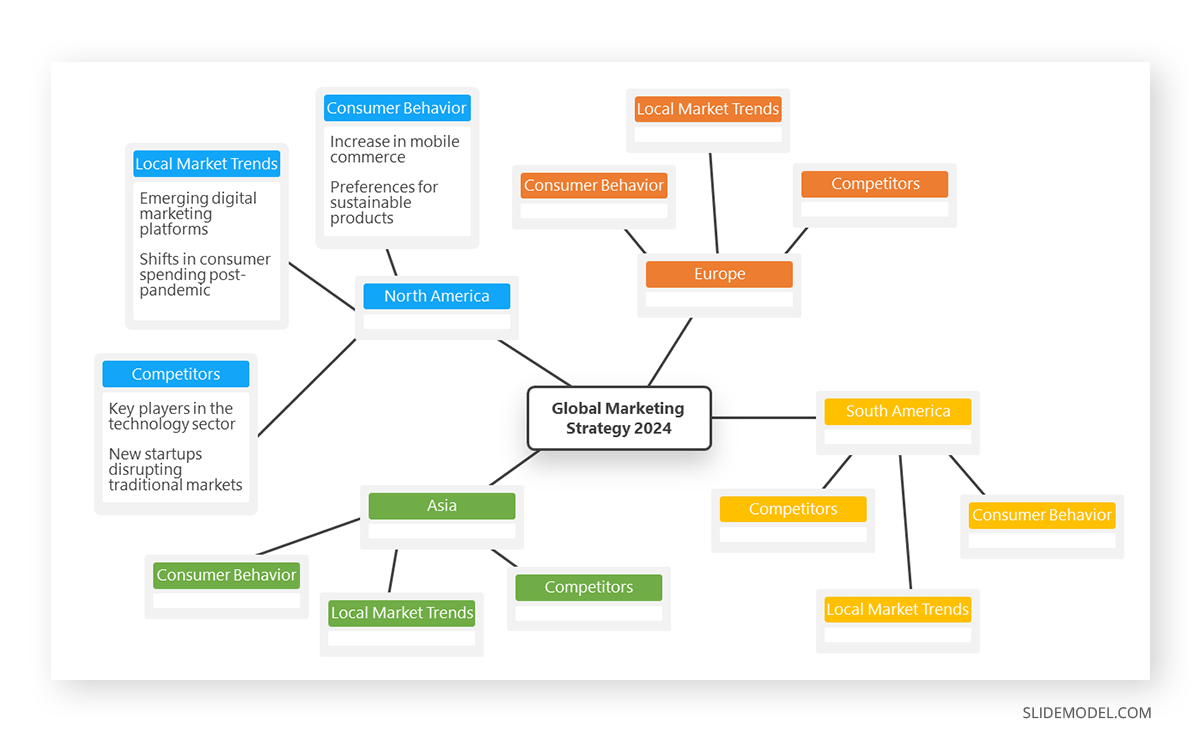
As we can see, each branch from the central node is identified with a unique color. This helps to easily identify to which region does the data belong. By applying an in-company collaborative approach, the team were able to populate sheets with real-time data from the different regions, and add links to the corresponding spreadsheets (which are also colored by region to avoid mix-ups).
The final presentation done to senior management was highly praised for its clarity and depth, directly attributed to the structured preparation done with the mind map note taking technique.
Case Study: Academic Research Presentation and Mind Map Note Taking
In our second case study, a doctoral candidate in environmental science used mind mapping to organize the research data for her dissertation on climate change impacts on coastal ecosystems.
The core node of her mind map was labeled “Impact of Climate Change on Coastal Ecosystems”. From that node, branches were laid out with new nodes labeled “Current Research”, “Methodology”, “Data Analysis”, “Case Studies”, and “Future Research Directions”. Under each one of those nodes, sub-nodes allowed her to organize the vast amounts of data and research papers effectively.
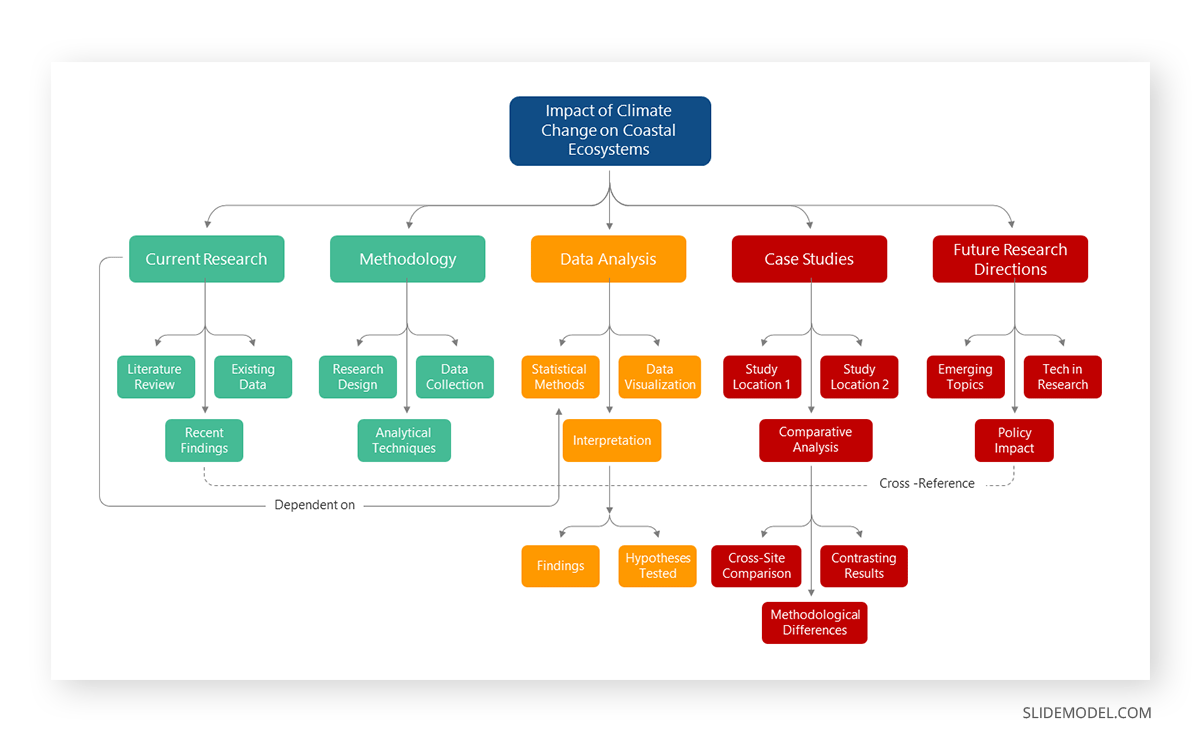
By integrating graphs, statistical data, and research citations directly into the digital mind map, the researcher can simplify data management. Additionally, she used a color coding system in red-yellow-green format to label:
- Red: Not started
- Yellow: In-progress
- Green: Completed
Thanks to the mind map notes, the researcher was able to structure her oral presentation, anticipating the potential questions that the dissertation committee may ask.
Case Study: Application of Mind Map Notes to Health Care System Improvement
In this final case study, we analyze the scenario in which a hospital administration team uses mind map notes to address the inefficiencies in patient flow and resource allocation within their facility. Initial research showed that some residents were using mind maps to instruct their interns on typical procedures; therefore, the method was used on a larger scale to analyze this problem.
After gathering the required resources, insights, and testimonials from employees and patients, the team constructed a mind map with a core node labeled “Hospital Efficiency.” The branches listed are Patient Admission, Treatment Protocols, Staff Allocation, and Discharge Procedures. Surrounding each sub-node, new branches were created to expose each situation and bottleneck and attach documents with proposed solutions.
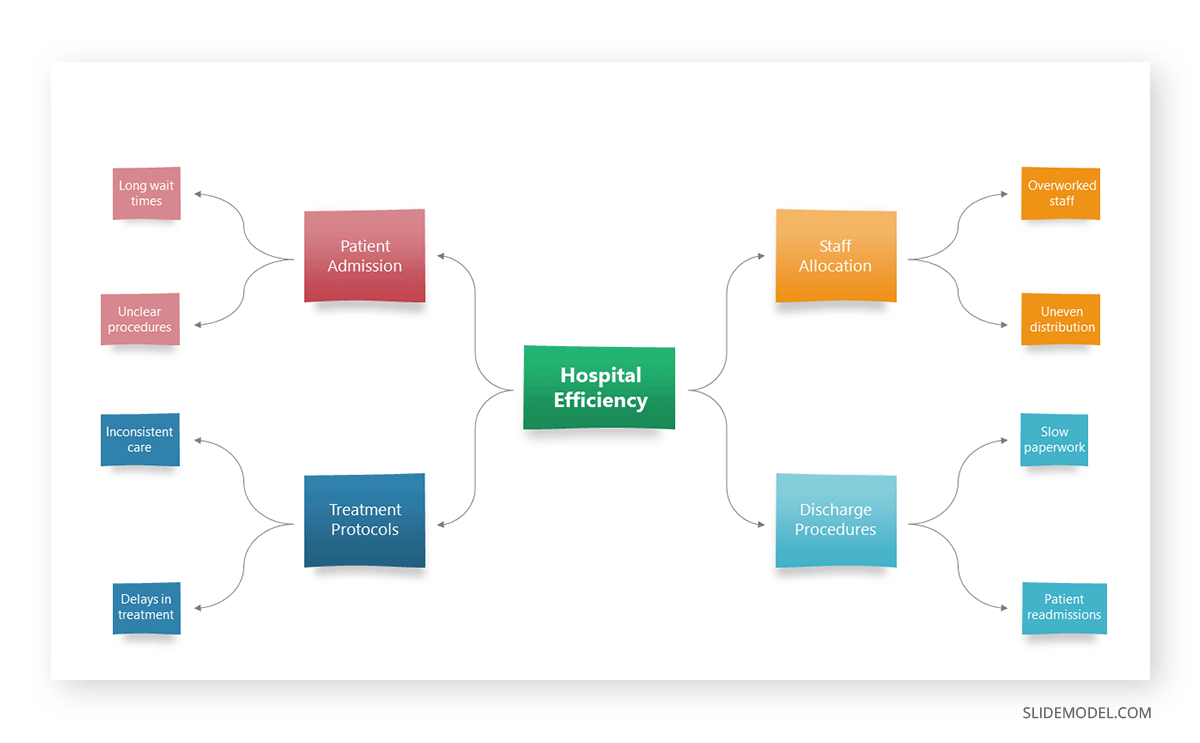
From the information retrieved from this mind map, the team was able to craft a new strategy presentation to deliver the revised protocols. Out of the implemented solutions, a 20% improvement in patient throughput was seen in less than 3 months, with a significant increase in staff satisfaction rates.
Recommended Mind Map Note Taking Templates for PowerPoint & Google Slides
We gathered our selection of professional mind map note taking templates that guarantee high-efficiency in creative journeys. You can also check our Free Mind Map Template for PowerPoint. Download and customize them now.
Final Words
Mind map note taking is a versatile tool to understand processes. Presenters can implement them in constructing new ideas, learning processes, or to drive more efficiency in terms of developing and delivering presentations. Although you can work with hand-made mind map notes, we highly advise working with a mind map template to speed up the creative process.

